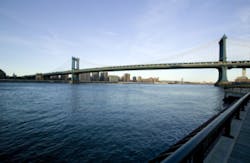Final season of dredging project underway for Hudson River
ALBANY, N.Y. — U.S. Environmental Protection Agency (EPA) Regional Administrator Judith A. Enck announced the start of the sixth and final season of dredging of sediments contaminated with PCBs (Polychlorinated Biphenyls) from the bottom of the Hudson River, according to a press release.
The dredging project, one of the largest and most complex cleanups in Superfund history, started in 2009, stated the release.
EPA is overseeing the project, which is being conducted by GE under the terms of a 2006 legal agreement, continued the release.
The cleanup called for the removal of an estimated 2.65 million cubic yards of PCB-contaminated sediment from a 40-mile stretch of the upper Hudson River between Fort Edward and Troy, New York, reported the release, and to date, around 2.5 million cubic yards have been removed.
GE reported investing more than $1 billion in the cleanup project to date, added the release.
“The Hudson River has been damaged by a toxic legacy that this federal Superfund cleanup is addressing,” said Enck. “The massive amount of PCBs that have finally been removed from this treasured river is a tremendous accomplishment that will benefit the communities along the Hudson River for generations to come.”
The dredging project is forecast to be completed this year, with habitat restoration to continue into 2016, noted the release.
Read the entire release here.
